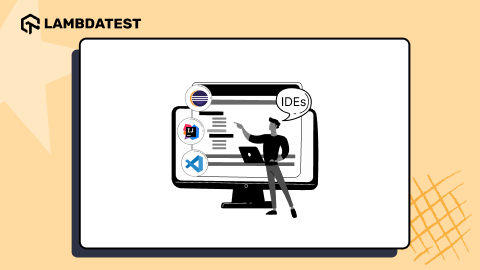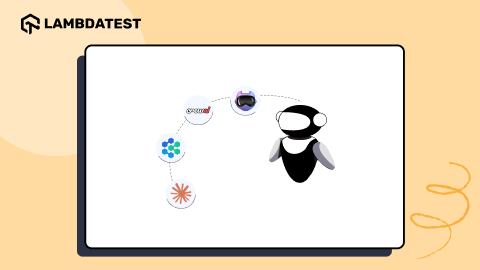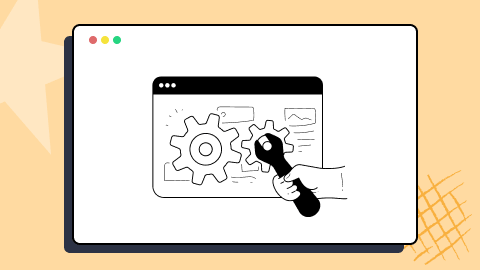Generative AI in Testing: Benefits and Tools
Salman Khan
Posted On: July 21, 2024
15 Min
Generative AI is a type of artificial intelligence that creates new outputs by learning patterns from existing data. As part of modern quality assurance practices, Generative AI in testing enables automation of tasks like test authoring, synthetic test data generation, test suite optimization, and more.
TABLE OF CONTENTS
- What Is Generative AI in Testing?
- How QA Evolves From Manual to Generative AI Testing?
- Benefits of Using Generative AI in Testing
- Types of Generative AI Models
- Generative AI Testing Tools
- Developing a QA Strategy With Generative AI
- Challenges of Generative AI in Testing
- Future Trends in Generative AI for Software Testing
- Frequently Asked Questions (FAQs)
What Is Generative AI in Testing?
Generative AI in testing is an approach that uses deep learning algorithms and natural language processing to autonomously enhance test automation. It goes beyond traditional automation to include predictive analytics, intelligent test execution, defect analysis, and end-to-end test maintenance.
This approach brings a new level of efficiency, accuracy, and reliability to the testing process. It helps QA teams reduce manual effort, improve test coverage, catch regressions earlier, and keep tests up to date with less maintenance.
How QA Evolves From Manual to Generative AI Testing?
Quality assurance has evolved from manual testing to more advanced approaches like test automation, data-driven testing, and Generative AI-based testing.
Let’s look at how quality assurance has evolved from manual testing to Generative AI testing:
Manual Testing
The roots of QA lie in human-driven testing where every interaction was manually validated, documented, and repeated across builds. These early practices were detailed, offering deep insight into software behavior. But this control came at a price: slow cycles, limited scalability, and a high tolerance for human error.
As software complexity increased, manual efforts struggled to keep pace. Regression coverage narrowed and edge cases were missed. The gap between development speed and QA bandwidth began to widen.
Test Automation
To make things faster and reduce errors, teams started using test automation. Instead of doing everything manually, testers can now write scripts that run tests automatically.
It made the process more consistent and saved time. But it had its downsides too. The test scripts often failed when the software evolved, creating instability in pipelines. Though, test automation accelerated the test process, but did not fully liberate QA from repetitive effort.
Data-Driven Testing
Data-driven testing added more flexibility. Now, instead of writing a new script for each test case, testers could feed different data into one script to cover a range of scenarios.
This worked especially well for software applications that needed to be tested under various conditions. Still, it wasn’t perfect, there was plenty of manual setup involved, and it can’t easily deal with new or unexpected changes in how a software behaves.
Generative AI Testing
Then came Generative AI, completely shifting how we think about QA. Powered by Large Language Models (LLMs) and contextual learning, it enables AI tools to generate test cases, generate synthetic test data, and even generate tests with AI using natural language prompts like feature specs or user stories.
With Generative AI handling the repetitive tasks, testers can now focus on more critical tasks. This help testing become faster, smarter, and more flexible.
Subscribe to the LambdaTest YouTube Channel and stay up-to-date with more such tutorials.
Benefits of Using Generative AI in Testing
Generative AI in testing has various benefits, including increased productivity, accuracy, and overall software quality.
Benefits:
- Improve automation and speed: Generative AI improves the testing process by automating the creation of test scripts, leading to faster feedback loops and shorter QA cycles, which can contribute to faster releases.
- Reduce human error: Generative AI reduces human error by automating activities that can be complex and repetitive. When combined with human insights, it leads to more accurate and consistent test results, hence enabling higher-quality software.
- Reduce test maintenance effort: Generative AI updates test cases and scripts automatically as the software application evolves or its codebase is updated, minimizing manual maintenance.
- Enhance test coverage: Generative AI provides broader test coverage by creating several scenarios, including edge cases, boundary conditions, and uncommon user paths-based on product requirements, user stories, or historical defect patterns.
Types of Generative AI Models
In software testing, Generative AI models can generate test cases, test scripts, test scenarios, synthetic data, and even documentation.
There are several types of Generative AI models, each with its own use case in testing:
- Generative Adversarial Networks (GANs): They create realistic test scenarios by simulating real-world conditions. It helps to expand test coverage and find edge cases that traditional testing approaches may not be able to handle as effectively.
- Transformers: They deal efficiently with large datasets and can be used to generate test cases. Transformers also excel at natural language processing tasks, making them ideal for tasks such as creating user scenarios and test scripts.
- Variational Autoencoders (VAEs): They are helpful in generating varied synthetic datasets or visual test data for testing UI elements.
- Recurrent Neural Networks (RNNs): They generate sequential test data, making them ideal for testing software applications with time-series or sequence-based inputs. They can simulate user interactions over time, providing insights into how a software application works when used continuously.
Generative AI Testing Tools
Generative AI is transforming software testing by automating different processes and increasing accuracy and efficiency. Several AI automation tools have emerged that use Generative AI to transform the way tests are conducted.
LambdaTest KaneAI
LambdaTest KaneAI KaneAI is a GenAI native QA Agent-as-a-Service platform that stands out for its ability to create, update, and debug tests using natural language, significantly reducing the time and expertise required to implement test automation.
KaneAI streamlines test creation and management, making the process faster, smarter, and more efficient for teams.
Key features of KaneAI:
- Effortless Test Creation: Generate and evolve tests with ease using natural language instructions, making automation simple for all experience levels.
- Intelligent Test Planner: Automates test steps generation based on high-level goals, simplifying the test creation process.
- Multi-Language Code Export: Convert your automated tests into all major languages and frameworks, ensuring flexibility in your testing environment.
- Advanced Testing Capabilities: Easily express complex conditions and assertions using natural language, enhancing test sophistication.
- API Testing Support: Seamlessly integrate backend testing with existing UI tests to expand your coverage.
- Enhanced Device Coverage: Run your tests across over 3000 browsers, OS, and device combinations for comprehensive testing.
- JIRA Integration: Seamlessly integrate and achieve continuous testing by tagging KaneAI on JIRA and triggering test automation directly.
- Smart Versioning Support: Tracks changes with version control, ensuring organized test management.
With the rise of AI in testing, it’s more important than ever to stay ahead by enhancing your skills. The KaneAI Certification validates your practical expertise in AI testing and positions you as a future-ready, high-value QA professional.
HyperExecute
HyperExecute is an AI-native test orchestration and execution platform to accelerate and streamline automated testing workflows. It enables faster, smarter test runs, delivering up to 70% improved execution speed compared to legacy test grids.
It analyzes historical runtime data and intelligently organizes and distributes your test suites to detect failures earlier and boost overall test reliability.
Test Intelligence
Test Intelligence is an AI-native platform by LambdaTest that leverages artificial intelligence to make software testing smarter, faster, and more reliable. It goes beyond simply running tests by analyzing patterns across test runs to detect flaky tests, highlight risky areas in the code, and even predict issues before they happen.
It also includes built-in Root Cause Analysis (RCA), helping teams quickly understand why a test failed, so they can fix issues faster, and improve the stability of their test suites.
LambdaTest MCP Server
LambdaTest MCP Servers support automation, SmartUI, and accessibility testing, making it easier for AI assistants to work directly with your test execution data through the Model Context Protocol (MCP). This means there is no more manual data transfers or switching between tools.
With this seamless integration, teams can debug faster, understand failures more clearly, validate UI changes visually, and gain deeper accessibility insights without changing the way they already work.
AI-Native Test Case Generator
An AI-native Test Case Generator by LambdaTest Test Manager is a tool that uses artificial intelligence to automatically create test cases from different types of input like user stories, bug reports, spreadsheets, screenshots, videos, or even audio notes.
Instead of writing test cases manually, you can simply provide the prompt in natural language, and the AI-native Test Case Generator generates structured, relevant test cases with proper steps, expected outcomes, and context.
ChatGPT
ChatGPT, developed by OpenAI, is an GenAI tool that helps with a wide range of testing-related tasks. Although it’s not a purpose-built testing tool, teams use ChatGPT to save time, and reduce manual effort. It understands natural language prompts and can generate test cases and automated test scripts, create test data, and more.
You can also explore some practical ChatGPT prompts for software testing to understand how testers and QA are already using generative AI in real-world testing workflows.
Claude
Claude is a GenAI tool developed by Anthropic to assist with natural, human-like conversations. Testers can use Claude to generate test cases, write test scripts, and analyze bug reports. It supports large inputs, making it useful for reviewing long documents or logs. It is not a dedicated testing tool but works as an assistant to speed up testing workflows.
These are some of the popular tools for Generative AI testing. To explore more tools, refer to this blog on AI testing tools.
Developing a QA Strategy With Generative AI
Generative AI requires a well-planned implementation strategy to realize its full potential.
Here are essential considerations for successful implementation:
- Define objectives: Begin by clearly defining the specific objectives you want to achieve by using Generative AI tools in your testing process.
- Choose the right tool: Select the Generative AI tool that best suits your needs. Each AI tool has specific strengths, so evaluate each tool’s capabilities and how effectively it works with your current tech stack.
- Analyze test infrastructure requirements: Analyze your current test infrastructure to ensure that it can handle the AI tool’s requirements
- Train your team: Provide comprehensive training for your team to efficiently use Generative AI tools. Training should include the principles of Generative AI, including how to interact with the tools, the testing process, and how to understand AI-driven findings.
- Monitor and evaluate progress: Set up a continuous monitoring procedure to track the effectiveness of Generative AI in your testing cycle. Check the performance of AI-driven tests regularly, keeping an eye on key metrics like bug detection rates, test execution duration, and more.
Challenges of Generative AI in Testing and Their Solutions
The following are some of the challenges along with their solutions related to integrating Generative AI into software testing workflows:
- Creation of irrelevant tests: One of the challenges with Generative AI in software testing is its limited knowledge of the context and complexity of individual software applications. It can result in the development of irrelevant or absurd tests that do not reflect the actual needs of the application under test.
- High computational demands: Generative AI models, particularly complicated ones such as Generative Adversarial Networks or large Transformer-based models, need substantial computational resources for both training and execution. This is a challenge, particularly for smaller organizations that may lack access to the required infrastructure.
- Adapting to new workflows: The integration of Generative AI into QA processes often requires adjustments to standard workflows. AI-based tools may require training for existing QA teams, and there may be resistance to implementing these new methods.
- Dependence on quality data: Generative AI is dependent on high-quality, diverse, and representative training data to perform appropriately. Poor or biased datasets lead to inaccurate or ineffective tests.
- Ethical considerations: As Generative AI continues to transform QA testing, it creates significant ethical concerns such as business and privacy. While AI can provide significant benefits, it is critical to address ethical considerations to ensure fair and responsible use.
Solution: Train the AI using domain-specific data and historical test cases to help it understand the application’s real needs. You can use Generative AI to assist in the initial draft creation, but rely on QA experts to review, validate, and refine these test cases.
Solution: Use cloud-based platforms offering scalable infrastructure, which allows smaller teams to leverage AI capabilities without upfront hardware investment.
Solution: Start with pilot projects to gradually introduce AI without impacting the entire process. Also, you can offer hands-on training focused on how Generative AI complements QA efforts, not replaces them.
Solution: Establish data governance practices that ensure training data is comprehensive, and up-to-date. You can also use bias detection tools to monitor for biases in data and adjust data selection strategies.
Solution: Establish guidelines for responsible AI usage, including data anonymization, consent management, and compliance with industry standards.
Future Trends in Generative AI for Software Testing
According to the Future of Quality Assurance Survey Report, 29.9% of experts believe AI can enhance QA productivity, while 20.6% expect it would make testing more efficient. Furthermore, 25.6% believe AI can effectively bridge the gap between manual and automated testing.
Let’s look at some future trends in using Generative AI for software testing.
- Integration with DevOps and CI/CD pipelines: Generative AI will be seamlessly integrated into DevOps practices and the Continuous Integration/Continuous Delivery pipelines. This integration will automate test processes and accelerate the continuous delivery of quality software.
- Advanced anomaly detection using predictive analytics: Generative AI, using predictive analytics, is going to be much more effective at finding anomalies in software behavior well before they become large-scale issues.
- Natural Language Processing (NLP) for test case creation: Natural Language Processing will allow Generative AI to comprehend requirements written in plain language and automatically create test cases and test scripts. This trend will speed up the testing process, minimize human error, and enable non-technical stakeholders to make more effective contributions to test case creation.
- Enhanced reporting and analytics: AI will improve testing process reporting and analytics, providing more in-depth insights into software performance and optimization opportunities. This increased visibility will allow teams to make more educated decisions and continuously improve their testing strategies.
Embedding AI into these CI/CD pipelines will help organizations ensure that automated tests run with every code change, hence accelerating development cycles without compromising robust quality assurance.
Analytics of past data and the performance of the software in real time lets AI forecast possible issues and thus enable mitigation measures early, improving software reliability and security.
Generate test cases using AI-native Test Manager. Try LambdaTest Now!
Conclusion
Generative AI in testing can greatly improve efficiency and software quality. Automating complex procedures and enabling more advanced testing methodologies allows teams to focus on developing more effective test cases and delivering robust software applications more quickly. Though Generative AI has some shortcomings, strategically incorporating Generative AI into QA processes can result in more efficient, accurate testing.
Frequently Asked Questions (FAQs)
What is Generative AI for testing code?
Generative AI for testing code automates the creation of test cases and test data by analyzing patterns in existing code. It can also identify potential bugs and optimize code quality.
What is GenAI in STLC?
GenAI in the Software Testing Life Cycle (STLC) enhances automation by generating test scripts, predicting defects, and speeding up test execution. It streamlines the testing process, reducing manual intervention.
How to use Generative AI in performance testing?
Generative AI in performance testing can simulate various user behaviors and load conditions, helping teams assess how applications perform under different scenarios. It leads to deeper insights into system performance and optimization.
How can Generative AI be used in software testing?
Generative AI in testing automates tasks like test case generation, bug prediction, and test data creation. It increases testing efficiency, accuracy, and coverage by reducing human effort.
Citations
- The Impact of Generative AI on Software Testing: https://isg-one.com/articles/the-impact-of-generative-ai-on-software-testing
Author
















